M-Pesa is by far the most successful example of mobile money services globally. Launched by Safaricom in 2007, the service is a revolutionary innovation that caused a global stir and continues to contribute greatly to Kenya’s GDP.
Key points to its success include simplicity and functionality; anyone, regardless of age or mobile phone type, is able to use M-Pesa. The service is mostly used to send cash from one person to another using their mobile number, and swiftly becoming a widely accepted method for payments and purchase. Millions of Kenyans, notably those in the unbanked population, have seen a positive impact in their daily lives.
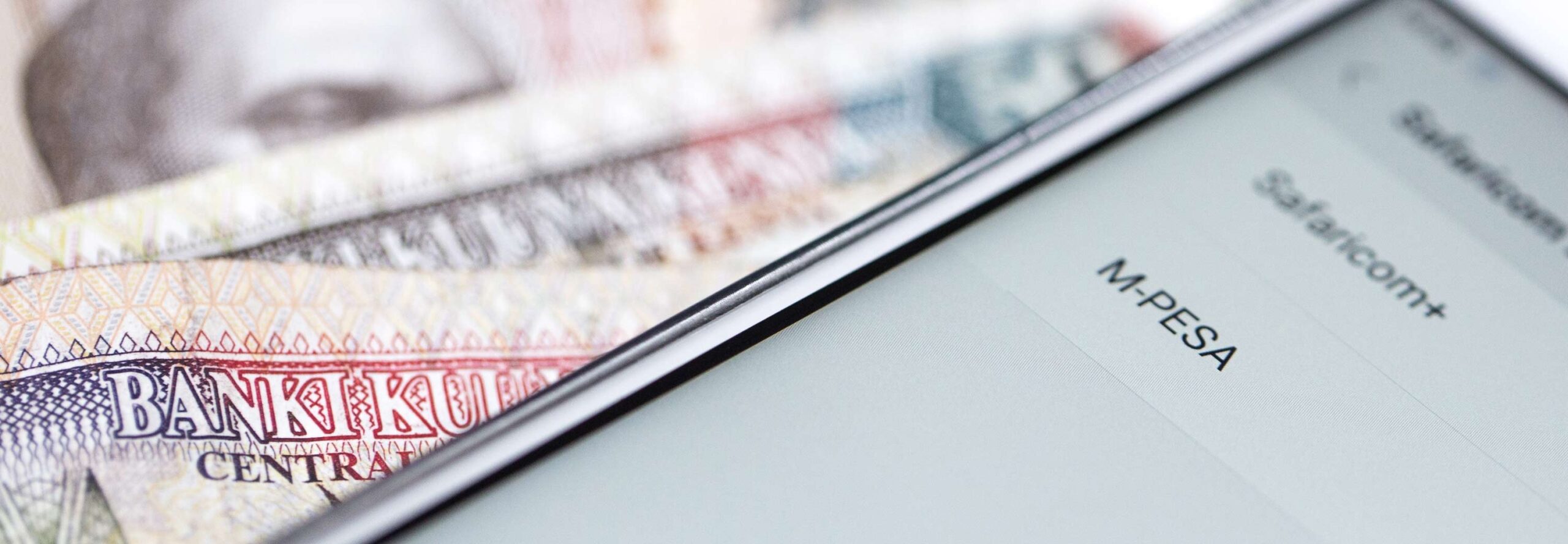
At one time or another, most M-Pesa users encounter the misfortune of mistyping a phone number and consequently sending cash to the wrong person.
“Crap!” is ensued by the long and inconvenient process of trying to recover your money, in the hopes that the wrong recipient hadn’t assumed ‘Christmas came early’, and made off with it.
Hakikisha
In 2013, a function named Hakikisha (Swahili for confirm or verify), was introduced. It serves as a final confirmation step before transactions are effected. This means that users sending money via M-Pesa are able to view the recipient’s registered name corresponding with the phone number typed.
Prior to Hakikisha, users had to complete the transfer and wait for a confirmation sms to see who the cash had been sent to. The concept of Hakikisha was therefore brilliant – until it was implemented.
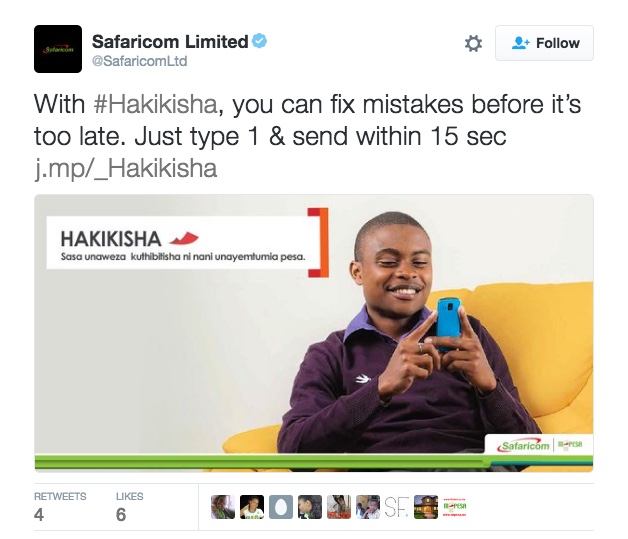
Habituation & Technology
Three psychographic traits that we all fall subject to:
- we are creatures of habit – once we learn a process, we automate it and do it subconsciously (think changing gears in a manual car).
- we have increasingly shorter attention spans – we’re more distracted than ever before, being constantly bombarded with messages.
- technological advancements have made us inherently lazy – the balance between convenience and laziness can be debated.
Habituation and human behaviour shows that we read the actionable buttons (OK / CANCEL) in a dialog box first, and try to logically deduce what this action is for – the content or subject of the dialog box is secondary in the hierarchy of information, if not redundant.
Those of you who have used M-Pesa to send money are likely to be familiar with the process illustrated below:
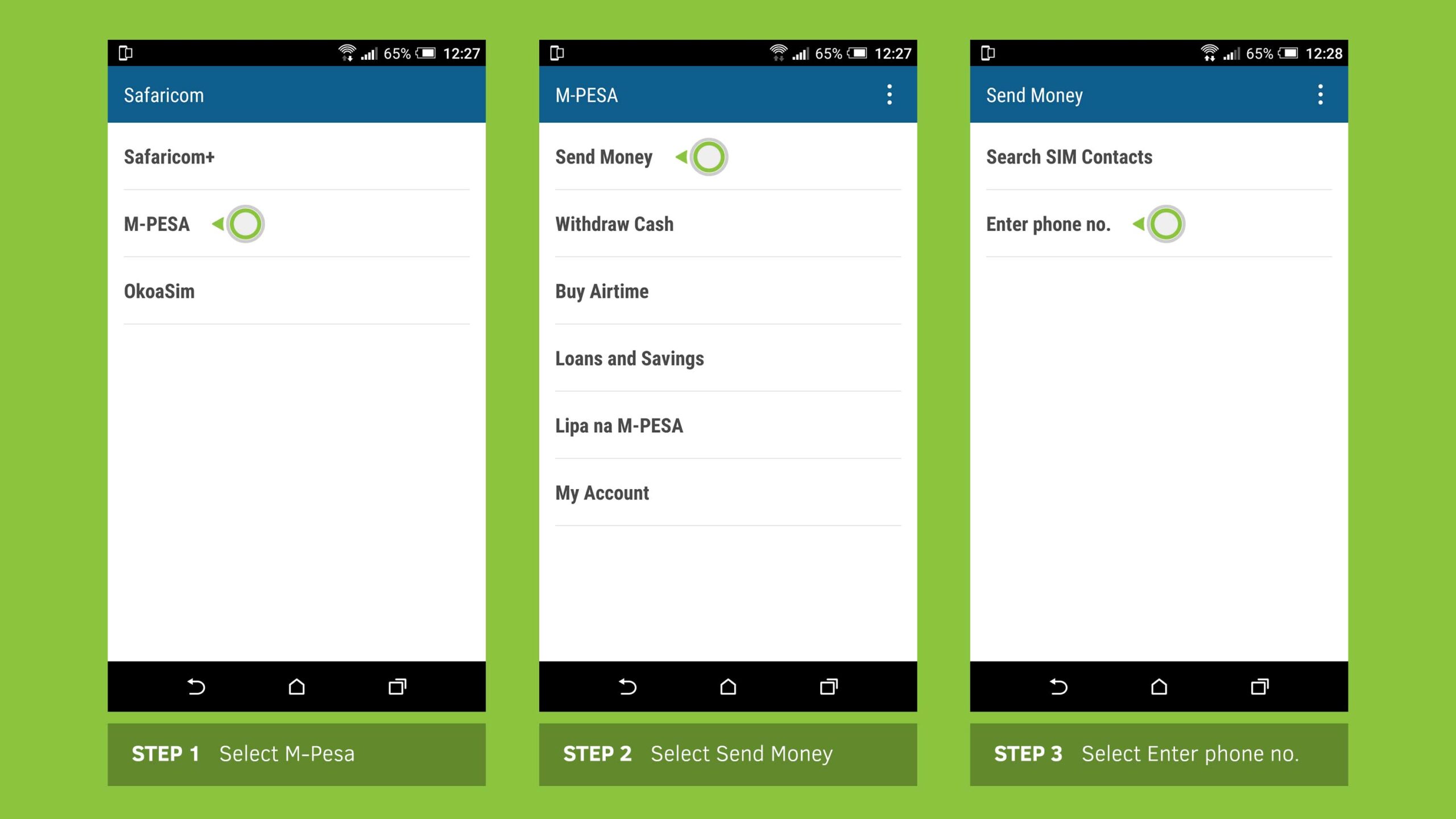
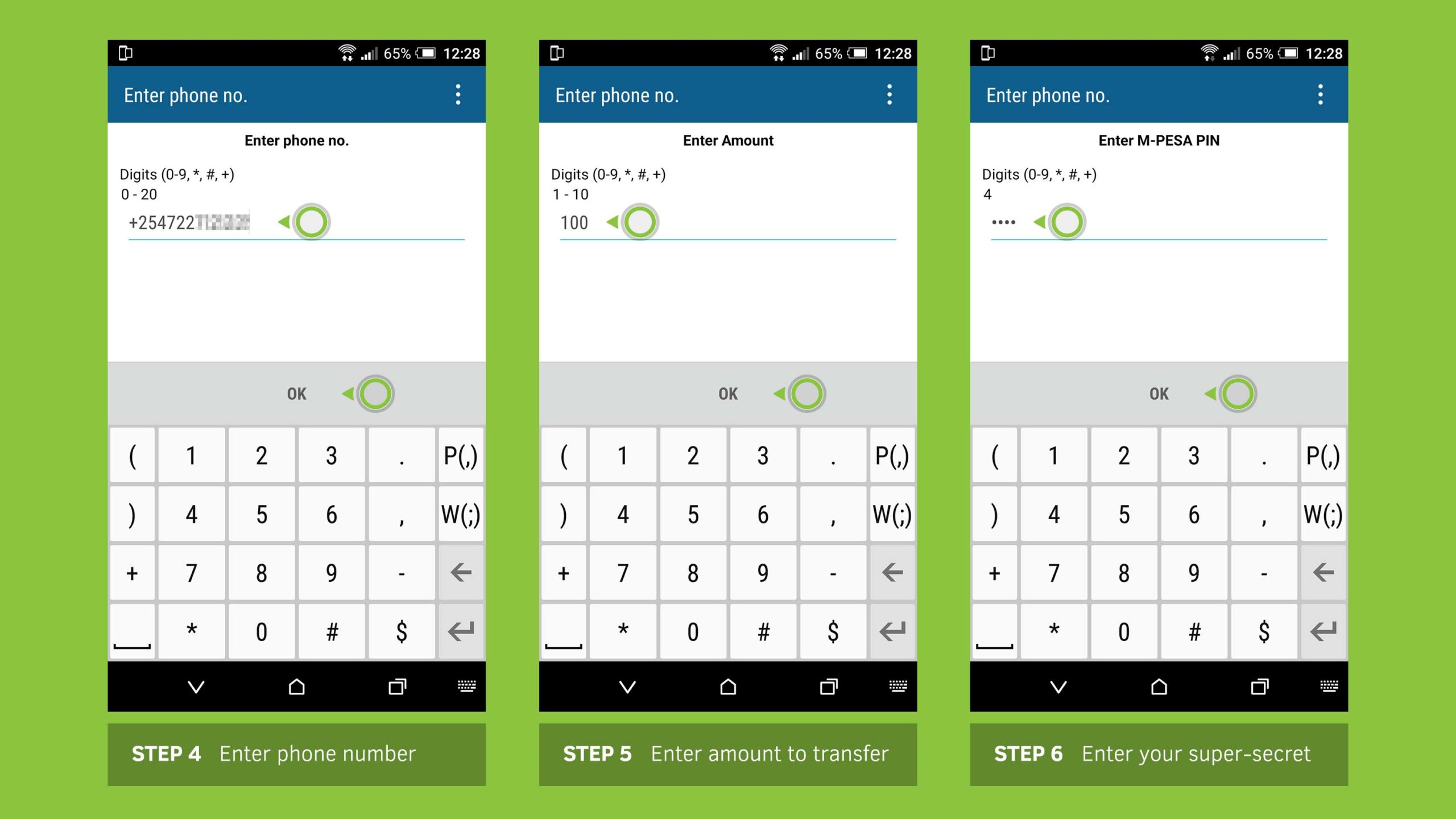
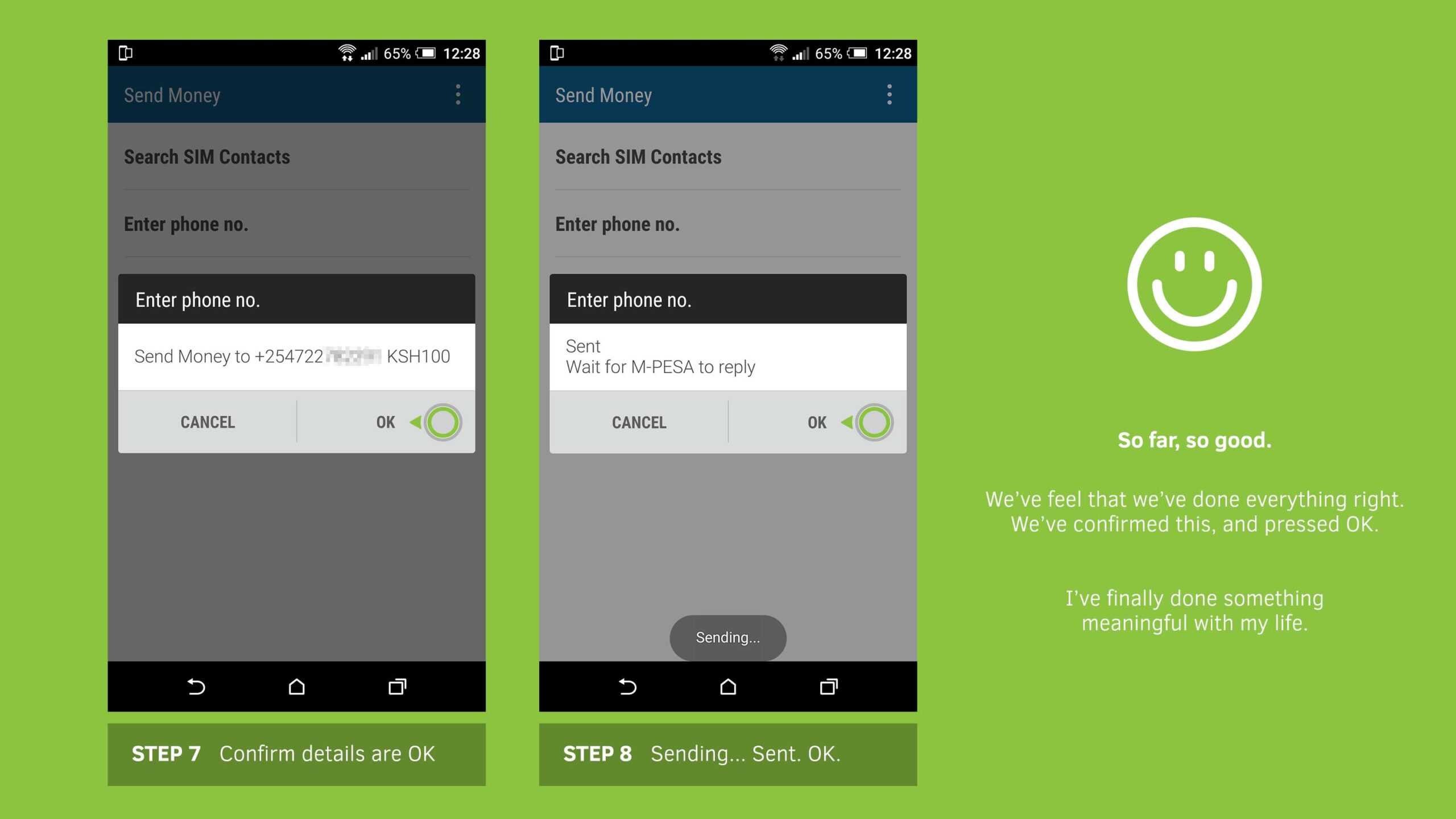
Here comes Hakikisha..

You want to SEND money, Stacy is expecting the money, but why do you feel that Mpesa wants you to press CANCEL instead?
Instantly, memories of that psychology class you once took come flooding. You make a self diagnosis, “I am experiencing cognitive dissonance.” See, your money wasn’t wasted. Back to Mpesa, you have seconds to make a very confusing decision. Panic. You figure that to SEND, you have to press CANCEL.
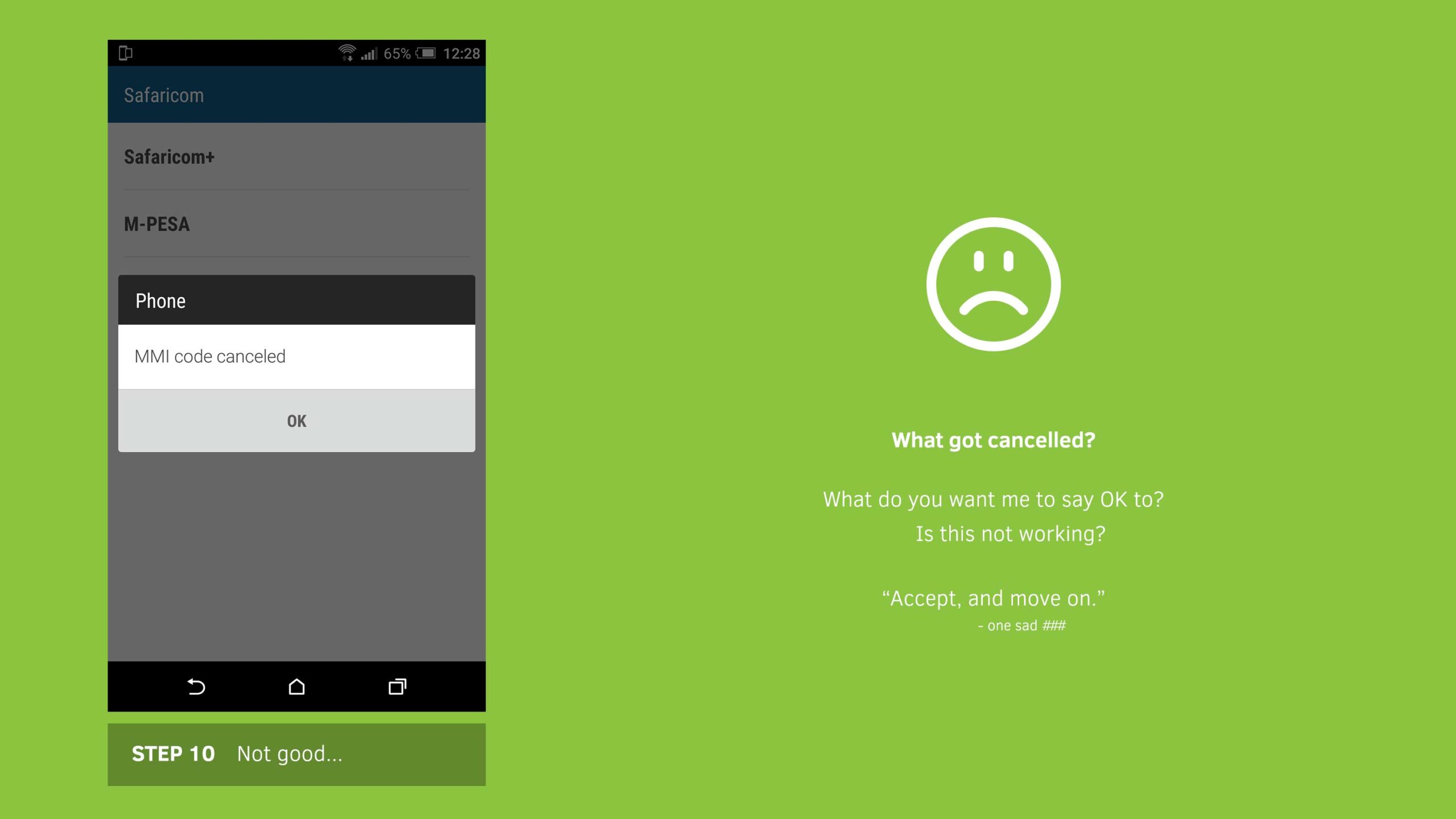
You proceed with the hope that all is well.

“Phew!”
Semiotics and UX
There’s divergence of language between USSD dialog box limitations (sending commands) and the human intent behind an M-Pesa transaction (sending money).
Think of these few clusters of button labels:
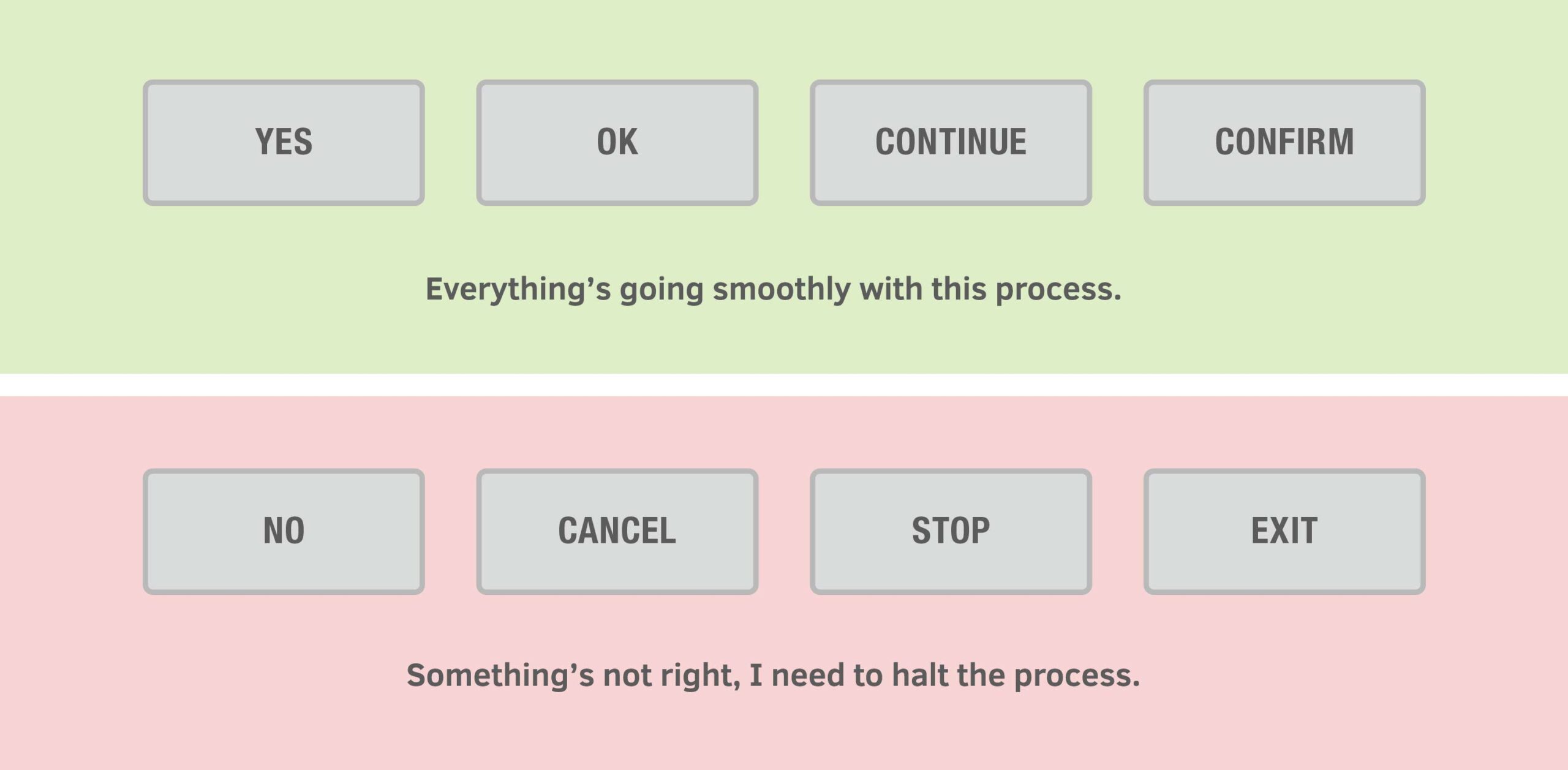

Bad UX is Expensive
As a result of “wrong use” of the Hakikisha feature, Safaricom has spent a pretty penny on what could only be described as a modern day BCC campaign (what we ad-folk like to call Behaviour Change Communication). Intending to change the way we use the feature by get us all used to the idea of pressing CANCEL to SEND, or SEND to CANCEL.

Overcoming Tech Limitations
We understand the archaic modal notifications of a USSD bubble – working within these limitations, we think it’s quite simple to fix. Swap out the boolean (0=false, 1=true) values of the CANCEL and SEND buttons, and remove the need for an input field.
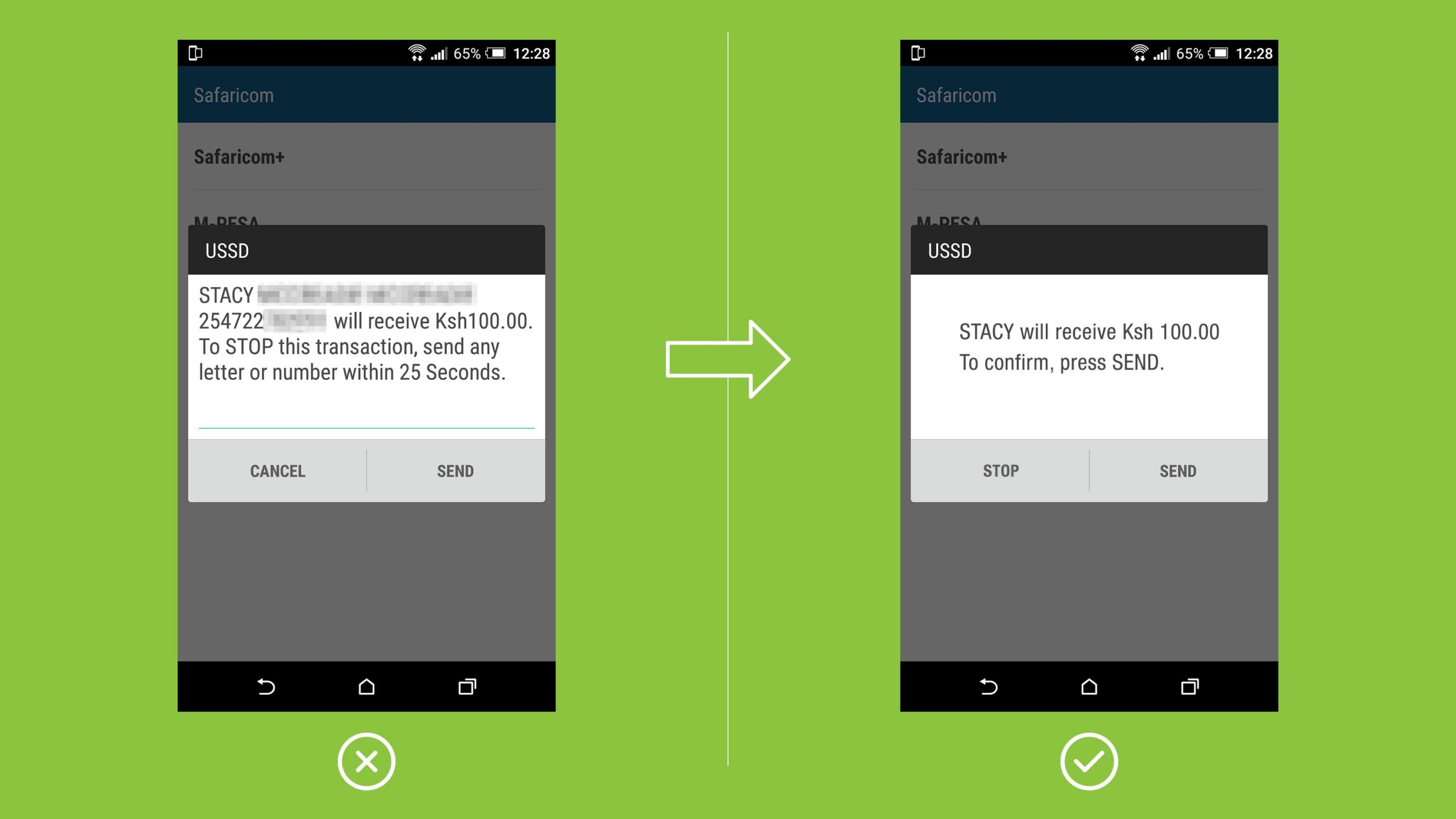
But wait…
Hakikisha has been well-integrated into our USSD menus for some years now, and one could argue that Habituation has kicked in once again – we’re now used to the idea of pressing CANCEL as confirmation of our intent to send money. So here’s the million-dollar question, do you fix it and run another BCC campaign to re-train millions of Kenyans used to this, or do we stick it out and call it just one more peculiarity amongst the magic that keeps Kenya going?